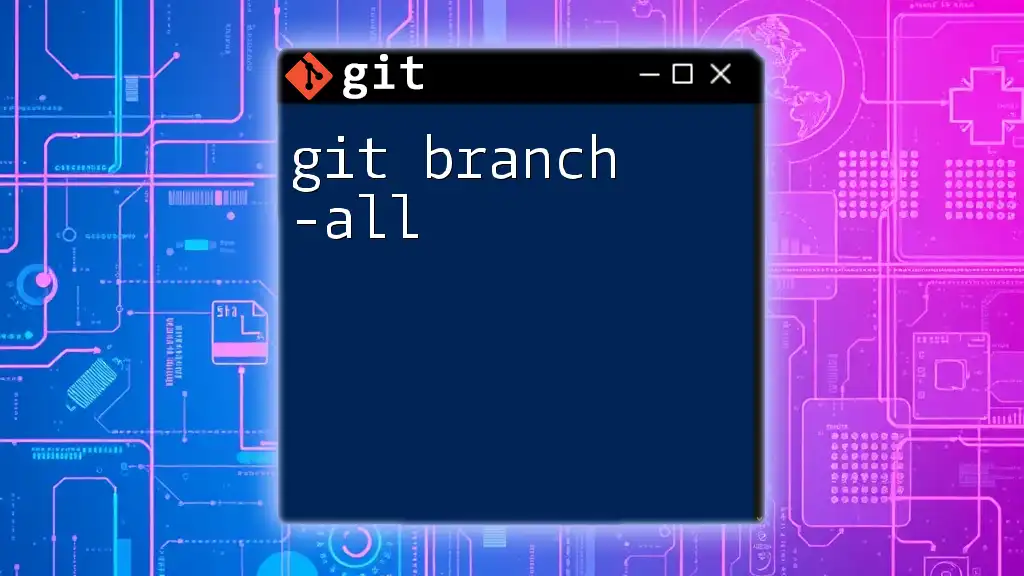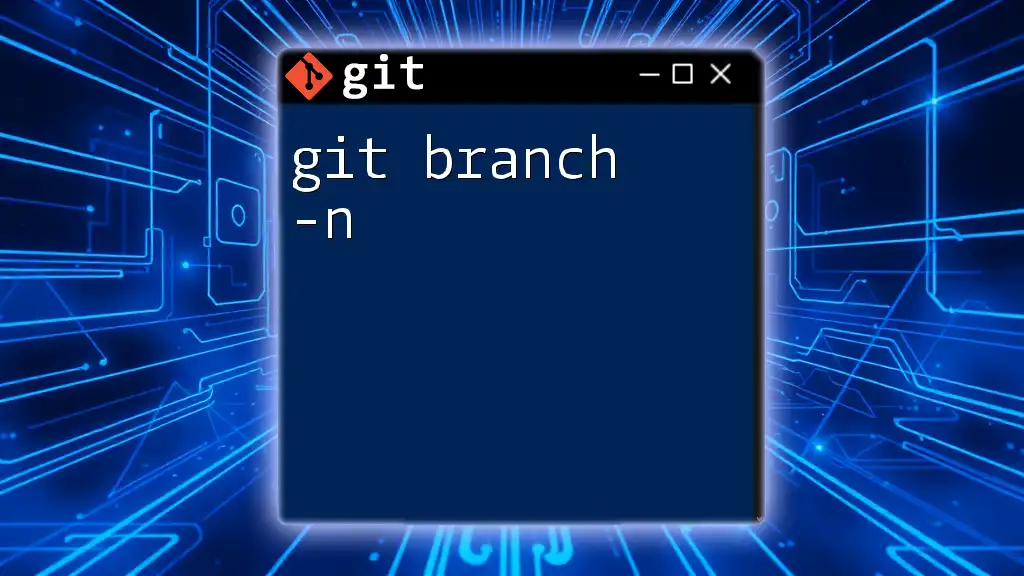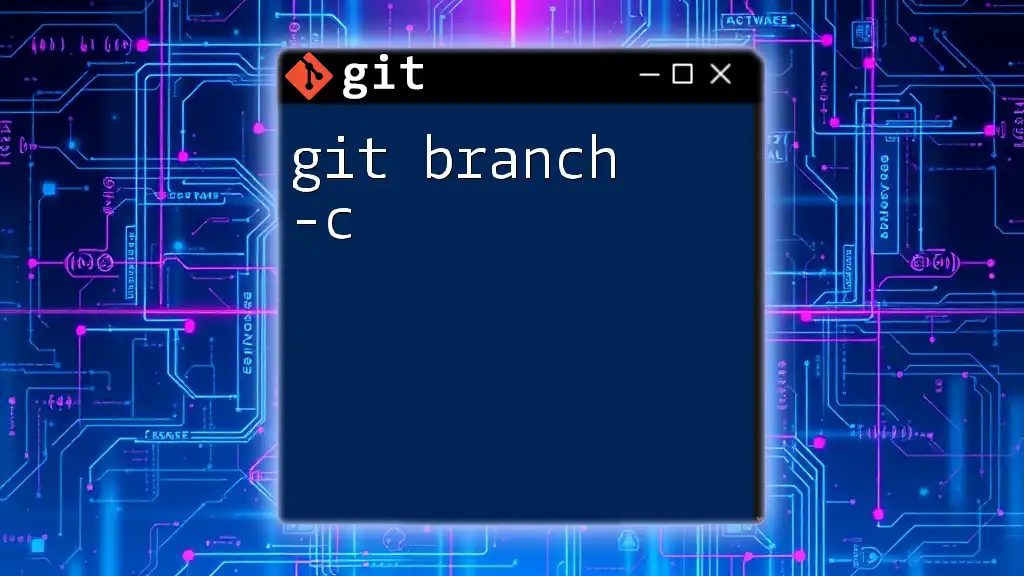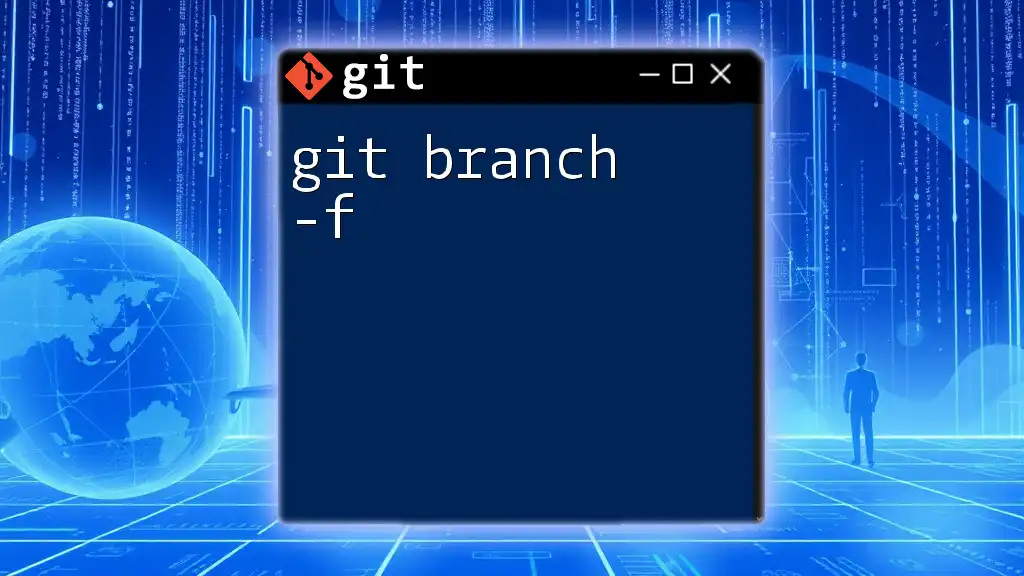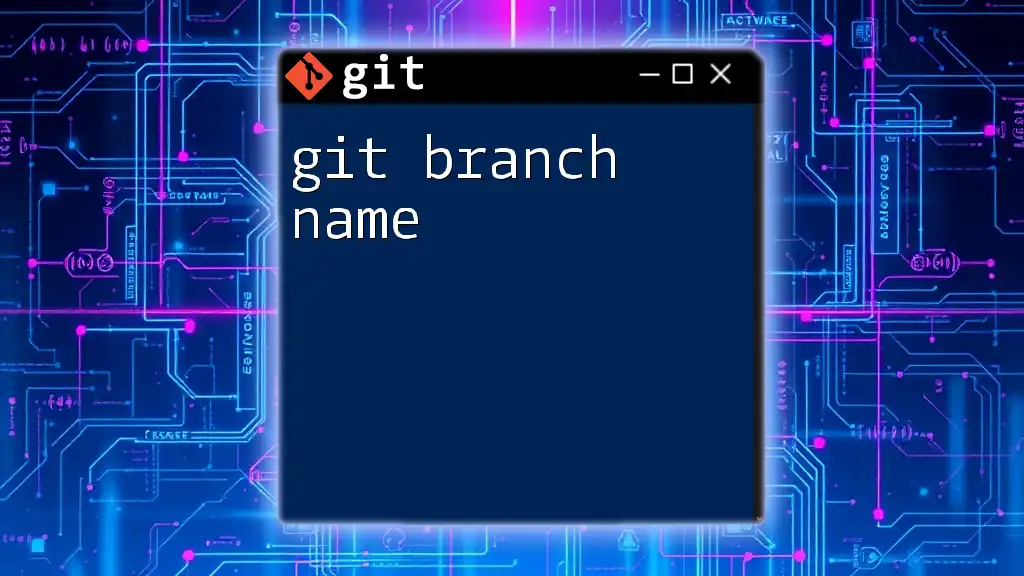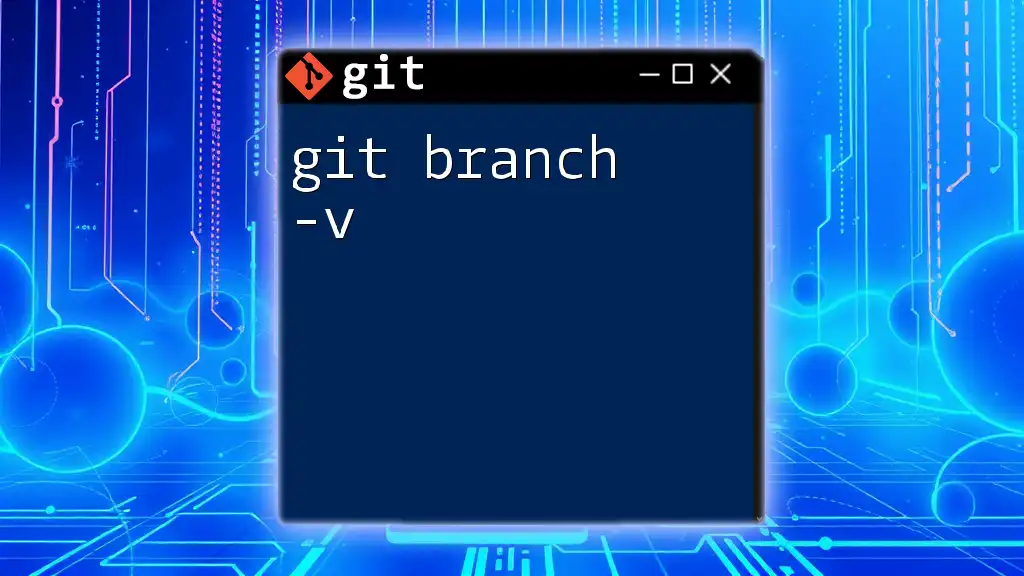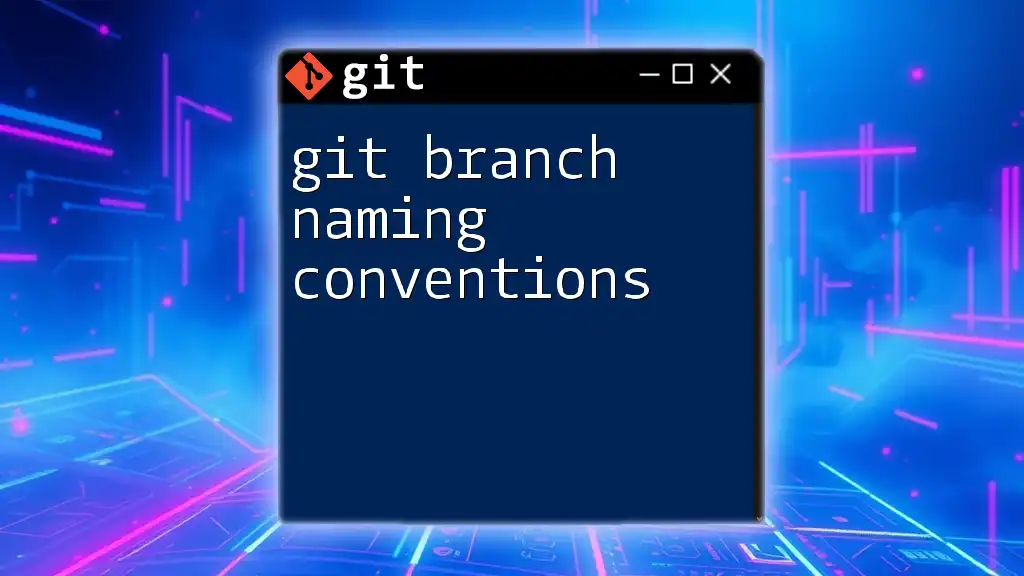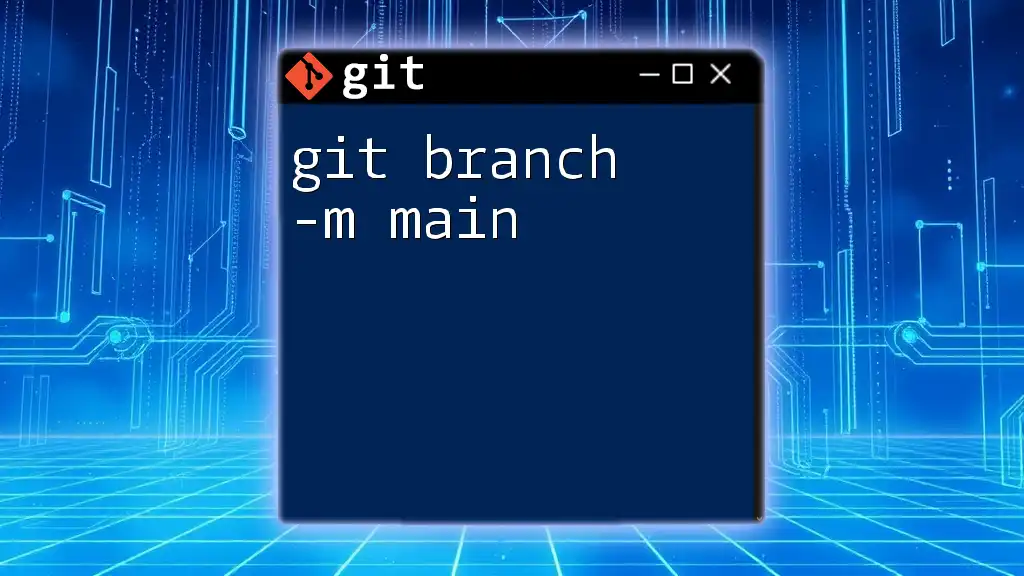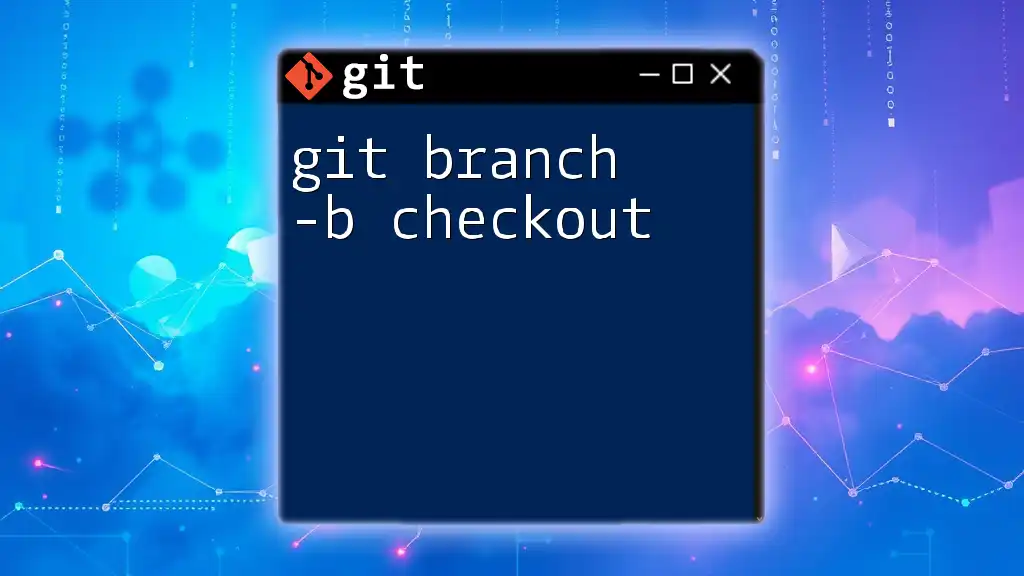The command `git branch --all` lists all the branches in your local repository as well as remote-tracking branches, providing a comprehensive view of all branches available.
git branch --all
Understanding Git Branching
What Is a Git Branch?
A Git branch is essentially a pointer to a specific commit in your repository's history. Branching in Git allows multiple developers to work on different features or fixes without interfering with the main codebase. Each branch can evolve independently, facilitating parallel development and protecting the stability of the main branch, often referred to as main or master.
Imagine working on a collaborative project where one team member is developing a new feature while another is fixing bugs. Branches make this possible by segregating changes until they are ready to be integrated into the main codebase.
Common Branching Terminology
Understanding the terminology used around Git branches is crucial:
- Branches: These are like diverging paths in your project's history. Each branch represents an independent line of development.
- Main Branch: This is the primary branch in a Git repository, commonly named `main` or `master`.
- Feature Branches: Temporary branches created to develop new features. They typically start from the main branch.
- Remote Branches: These are branches that exist on a remote repository, which can be accessed by other contributors.

Overview of `git branch`
Purpose of `git branch`
The `git branch` command is a versatile tool for managing branches in your repository. With this command, you can:
- Create new branches,
- Delete existing branches, or
- List branches currently in your repository.
Basic Command Syntax
The syntax for the `git branch` command is simple:
git branch [options] [branch_name]
Some of the common options include:
- `-d`: Delete a branch.
- `-m`: Rename a branch.
- `-a`: List both local and remote branches.
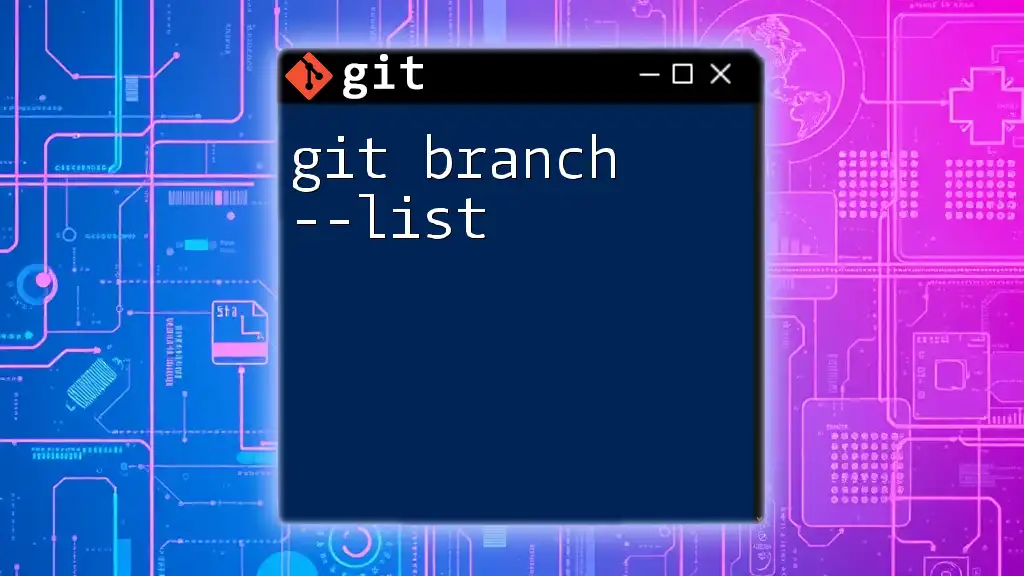
Detailing the `git branch --all` Command
What Does `git branch --all` Do?
When you run the command `git branch --all`, you instruct Git to display a list of all branches available in your repository—this includes both local branches and remote branches.
This command is particularly helpful in collaborative scenarios where multiple developers may be creating branches in the same project.
Command Syntax
To view all branches, simply execute:
git branch --all
Example Scenario
Imagine you are working on a project that has multiple branches. For example, you might have:
- Local branches:
- `main`
- `feature/new-feature`
- Remote branches:
- `remotes/origin/main`
- `remotes/origin/feature/old-feature`
Running `git branch --all` will give you a comprehensive view of all these branches, allowing you to easily navigate your project structure.

Interpreting the Output
Understanding the Output Structure
Upon executing `git branch --all`, you will see output that looks something like this:
* main
feature/new-feature
remotes/origin/main
remotes/origin/feature/old-feature
The `*` symbol indicates which branch you are currently on. In this case, you are on the main branch.
Breakdown of the Output Components
The output can be dissected into two main categories:
-
Local branches: Listed without a prefix. For example, `main` and `feature/new-feature` are local branches you can work on directly.
-
Remote branches: Identified by the `remotes/origin/` prefix. These represent branches that exist on the remote repository, which you can track and collaborate with other team members. For instance, `remotes/origin/main` indicates the main branch on the remote named `origin`.
Common Symbols and What They Mean
Understanding the symbols in the output is essential:
- The asterisk (`*`) denotes your current branch. This is where your working directory is currently focused.
- The naming of remote branches (`remotes/origin/branch-name`) signifies that these branches are mirrored copies of the branches that reside in the remote repository. They allow you to view the state of the branches without having to check them out.
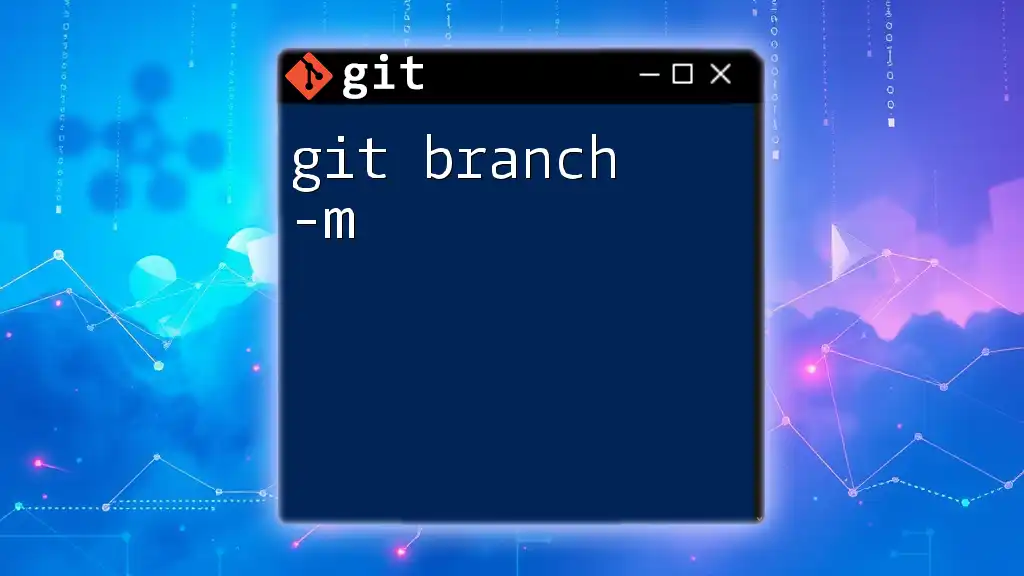
Use Cases for `git branch --all`
Quickly View All Available Branches
Using `git branch --all` provides a rapid overview of all branches in your repository. This is highly beneficial in larger projects with numerous branches, as it helps you stay organized and aware of what has been developed or is still in progress.
Managing Remote Branches Effectively
Identifying remote branches enables you to understand what others are working on and helps you coordinate better. For example, if a remote feature branch is stale, you can choose whether to delete it or merge it back into your workflow.
Debugging Branch Issues
If you encounter issues with branches or need to track down a bug affecting multiple branches, `git branch --all` can help troubleshoot by giving you visibility into what branches exist and their current states.
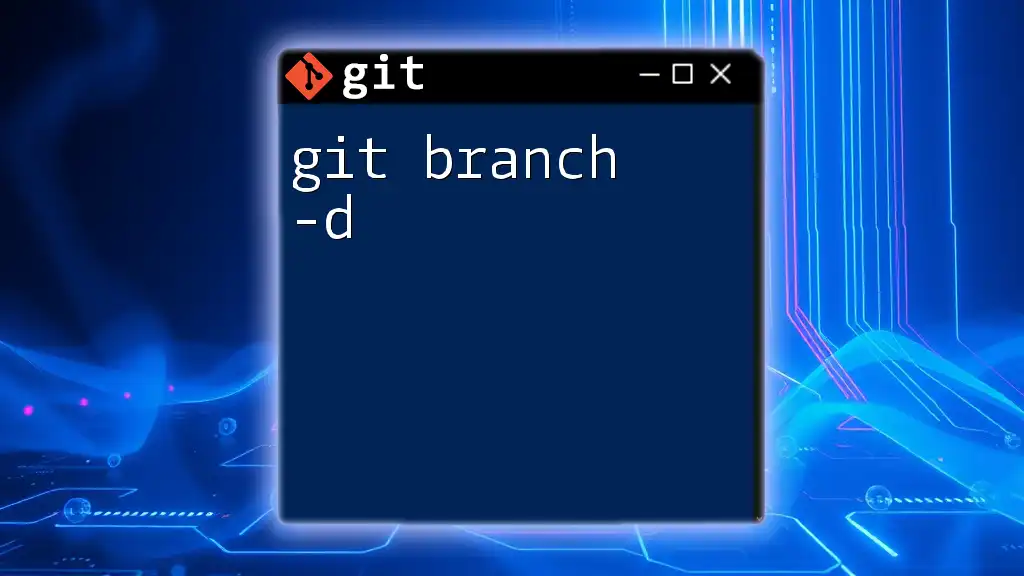
Best Practices for Using Git Branching
Naming Conventions for Branches
A clear naming convention for branches can drastically improve your team's workflow. Here are some guidelines:
- Use prefixes to categorize branches. For example, `feature/`, `bugfix/`, and `hotfix/` can categorize branches by their purpose.
- Be descriptive. Names should give insight into the purpose of the branch, such as `feature/authentication` or `bugfix/issue-123`.
Regularly Cleaning Up Old Branches
Maintaining a clean branch structure is paramount. After completing a feature or a bug fix, it's wise to delete the corresponding branches. You can use the following command to delete local branches:
git branch -d branch_name
For remote branches, you can execute:
git push origin --delete branch_name
Combining `git branch` with Other Commands
To enhance your workflow, combine `git branch` with other commands. For instance, after listing all branches, you might want to switch to a specific branch using:
git checkout branch_name
Or, once you have a local feature branch prepared, you can merge it back into the main branch:
git checkout main
git merge feature/new-feature
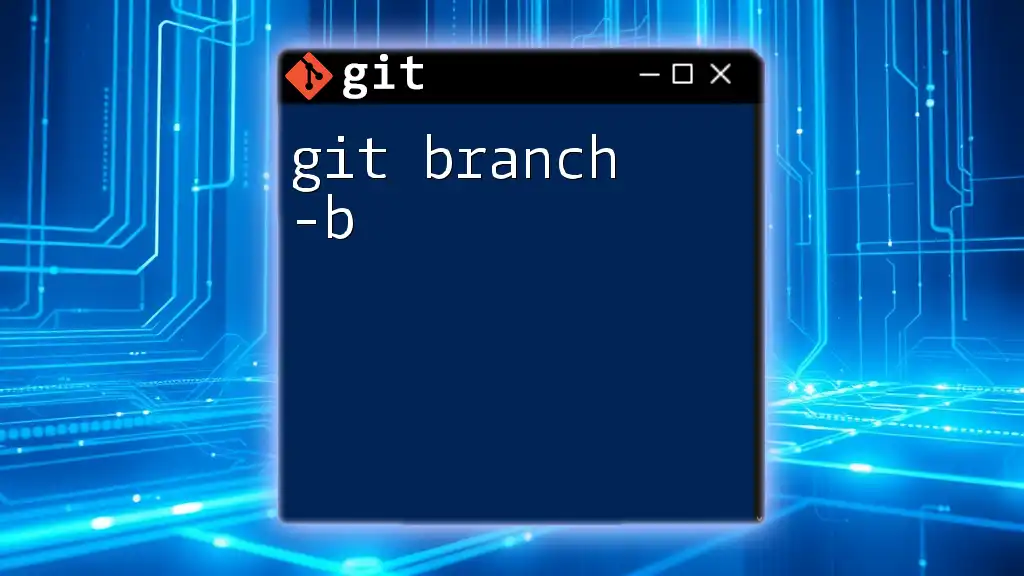
Conclusion
Mastering the command `git branch --all` is pivotal in navigating branches effectively within Git. It allows you to keep track of every line of development in your project, thus fostering collaboration and organization. Regular practice with this command will enhance your Git workflow and empower your development processes. For those eager to continue learning, explore more Git command tutorials to deepen your understanding and maximize your productivity in version control.
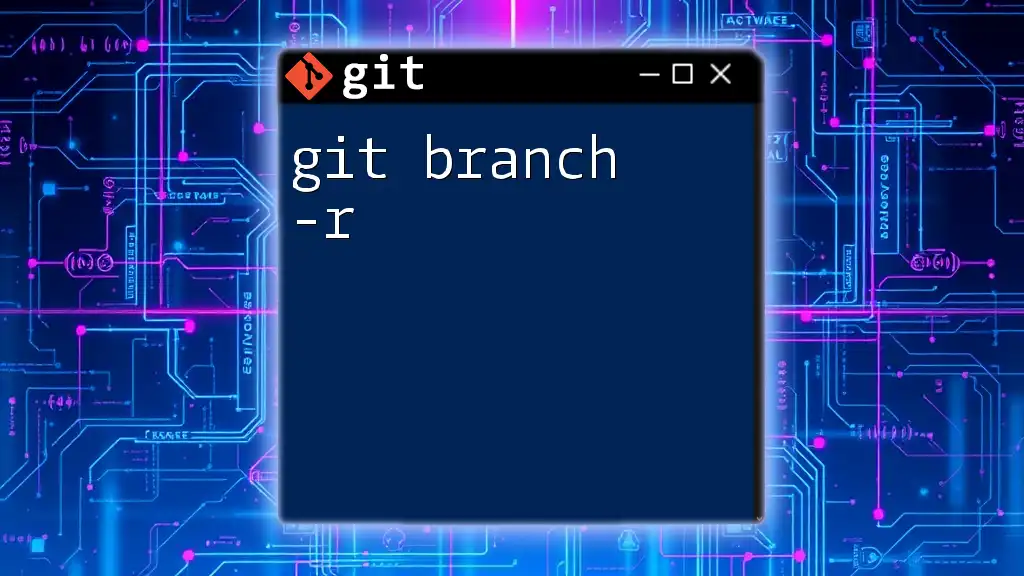
Additional Resources
For more information on Git, consider these resources:
- [Official Git Documentation](https://git-scm.com/doc)
- Articles on branching strategies
- Recommendations for Git GUI tools to streamline your workflow.

